Q31:
AS & A Level Chemistry - 9701 Paper 1 2023 Summer Zone 2
Questions:
31/40

Topic: CH15 - HYDROCARBONS
Solution
Solution is C

PRACTISE
Similar Questions

LEARN
Concepts with Sparky

More Questions from this Topic
Theory
CH15 - HYDROCARBONS
Chlorine, $Cl_{2}$, reacts with many elements and compounds to form chlorides.Table 2.1 shows information about some chlorides of Period 3 elements.Ta...
2024
 Spring
Spring
 Spring
Spring
 5
5
Theory
CH15 - HYDROCARBONS
CH_3(CH_2)_5CHBrCH_3 exists as a pair of stereoisomers.(a) Draw the three-dimensional structures of the two stereoisomers of CH_3(CH_2)_5CHBrCH_3. R c...
2024
 Summer
Summer
 Summer
Summer
 2
2
Theory
CH15 - HYDROCARBONS
(a) Complete Fig. 4.2 to show the mechanism for the formation of 1,2-dibromoethane in reaction 1.Include charges, dipoles, lone pairs of electrons and...
2024
 Winter
Winter
 Winter
Winter
 2
2
Theory
CH15 - HYDROCARBONS
Hydrocarbon molecules contain covalent bonds.(a) Define covalent bond....................................................................................
2024
 Summer
Summer
 Summer
Summer
 2
2
Theory
CH15 - HYDROCARBONS
Benzene, $C_6H_6$, reacts with chloroethane, $C_2H_5Cl$, in the presence of a suitable catalyst to form ethylbenzene, $C_6H_5C_2H_5$. In the presence ...
2024
 Winter
Winter
 Winter
Winter
 2
2
Theory
CH15 - HYDROCARBONS
(a) Nitrosyl chloride, NOCl, can be formed by the reaction between nitrogen monoxide and chlorine, as shown.$2NO + Cl_{2} \rightarrow 2NOCl$The initia...
2024
 Summer
Summer
 Summer
Summer
 2
2
Theory
CH15 - HYDROCARBONS
Benzene reacts with chlorine gas to form chlorobenzene. This reaction can be described as the reaction between benzene molecules and $Cl^+$ ions. The ...
2024
 Winter
Winter
 Winter
Winter
 2
2
Theory
CH15 - HYDROCARBONS
Benzene, C_6H_6, reacts with chloroethane, C_2H_5Cl, in the presence of a suitable catalyst to form ethylbenzene, C_6H_5C_2H_5. In the presence of the...
2024
 Winter
Winter
 Winter
Winter
 2
2
Theory
CH15 - HYDROCARBONS
(a) (i) Define addition reaction.........................................................................................................................
2023
 Spring
Spring
 Spring
Spring
 2
2
Theory
CH15 - HYDROCARBONS
(a) (i) Give the systematic name of D....................................................................................................................
2023
 Winter
Winter
 Winter
Winter
 2
2
More Questions from year 2023
Theory
CH3 - CHEMICAL BONDING
The Pauling electronegativity values of elements can be used to predict the chemical properties of compounds.Use the information in Table 1.1 to answe...
2023
 Spring
Spring
 Spring
Spring
 2
2
Theory
CH10 - GROUP 2
The Group 2 elements Mg to Ba are all silvery-white reactive metals.(a) (i) Draw a labelled diagram to show the bonding and structure of the Group 2 m...
2023
 Spring
Spring
 Spring
Spring
 2
2
Theory
CH15 - HYDROCARBONS
(a) (i) Define addition reaction.........................................................................................................................
2023
 Spring
Spring
 Spring
Spring
 2
2
Theory
CH16 - HALOGEN DERIVATIVES
(a) (i) State the reagent and conditions used to form E in reaction 1....................................................................................
2023
 Spring
Spring
 Spring
Spring
 2
2
Theory
CH2 - ATOMIC STRUCTURE
(a) The most common zinc mineral contains zinc(II) sulfide, ZnS.(i) Complete the electrons in boxes diagram in Fig. 1.1 to show the electronic configu...
2023
 Spring
Spring
 Spring
Spring
 3
3
Theory
CH6 - ELECTROCHEMISTRY
Hypophosphorous acid is an inorganic acid.The conjugate base of hypophosphorous acid is $\text{H}_2\text{PO}_2^-$.(a) Give the formula of hypophosphor...
2023
 Spring
Spring
 Spring
Spring
 1
1
Theory
CH12 - AN INTRODUCTION TO THE CHEMISTRY OF TRANSITION ELEMENTS
Vanadium is a transition element in Period 4 of the Periodic Table.(a) Define transition element.........................................................
2023
 Spring
Spring
 Spring
Spring
 2
2
Theory
CH20 - NITROGEN COMPOUNDS
Ethylamine and phenylamine are primary amines.Fig. 4.1These two compounds are synthesised by different methods.(a) Several methods can be used to form...
2023
 Spring
Spring
 Spring
Spring
 3
3
Theory
CH14 - AN INTRODUCTION TO ORGANIC CHEMISTRY
(a) Tulobuterol contains a benzene ring in its structure.Describe and explain the shape of benzene.In your answer, include:• the bond angle between ...
2023
 Spring
Spring
 Spring
Spring
 2
2
Theory
CH22 - ANALYTICAL TECHNIQUES
(a) (i) Suggest a compound that could be used as the stationary phase in this experiment.................................................................
2023
 Spring
Spring
 Spring
Spring
 1
1




 Share
Share




 Previous
Previous




